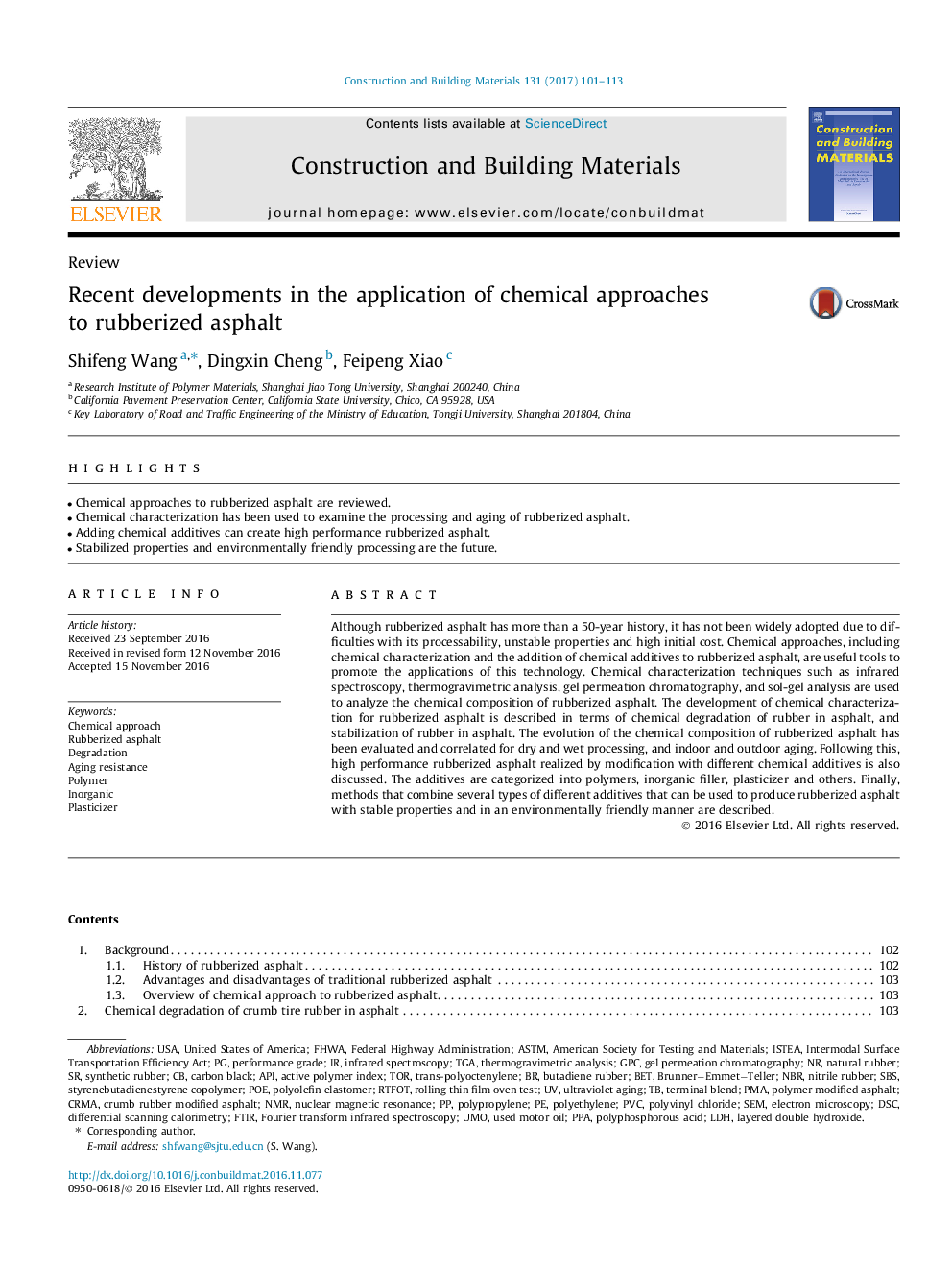| Article ID | Journal | Published Year | Pages | File Type |
|---|---|---|---|---|
| 4913609 | Construction and Building Materials | 2017 | 13 Pages |
Abstract
Although rubberized asphalt has more than a 50-year history, it has not been widely adopted due to difficulties with its processability, unstable properties and high initial cost. Chemical approaches, including chemical characterization and the addition of chemical additives to rubberized asphalt, are useful tools to promote the applications of this technology. Chemical characterization techniques such as infrared spectroscopy, thermogravimetric analysis, gel permeation chromatography, and sol-gel analysis are used to analyze the chemical composition of rubberized asphalt. The development of chemical characterization for rubberized asphalt is described in terms of chemical degradation of rubber in asphalt, and stabilization of rubber in asphalt. The evolution of the chemical composition of rubberized asphalt has been evaluated and correlated for dry and wet processing, and indoor and outdoor aging. Following this, high performance rubberized asphalt realized by modification with different chemical additives is also discussed. The additives are categorized into polymers, inorganic filler, plasticizer and others. Finally, methods that combine several types of different additives that can be used to produce rubberized asphalt with stable properties and in an environmentally friendly manner are described.
Keywords
APITerminal blendFHWAChemical approachRTFOTUMoPolyolefin elastomerPOECrmAPPANBRGPCDSCASTMTGASBSTORnuclear magnetic resonancePMACrumb rubber modified asphaltUnited States of AmericaUSAThermogravimetric analysisNMRDegradationAmerican society for testing and materialsPerformance gradeUsed motor oilBETFTIRInfrared spectroscopyFourier transform infrared spectroscopyInorganicButadiene rubberNatural rubberSynthetic rubberNitrile rubberLDHSEMAging resistanceElectron microscopyLayered double hydroxidePlasticizerPolyethylenePolypropylenePolymerPolymer modified asphaltPVCUltraviolet agingDifferential scanning calorimetryCarbon blackGel permeation chromatographyPolyvinyl chloride
Related Topics
Physical Sciences and Engineering
Engineering
Civil and Structural Engineering
Authors
Shifeng Wang, Dingxin Cheng, Feipeng Xiao,
